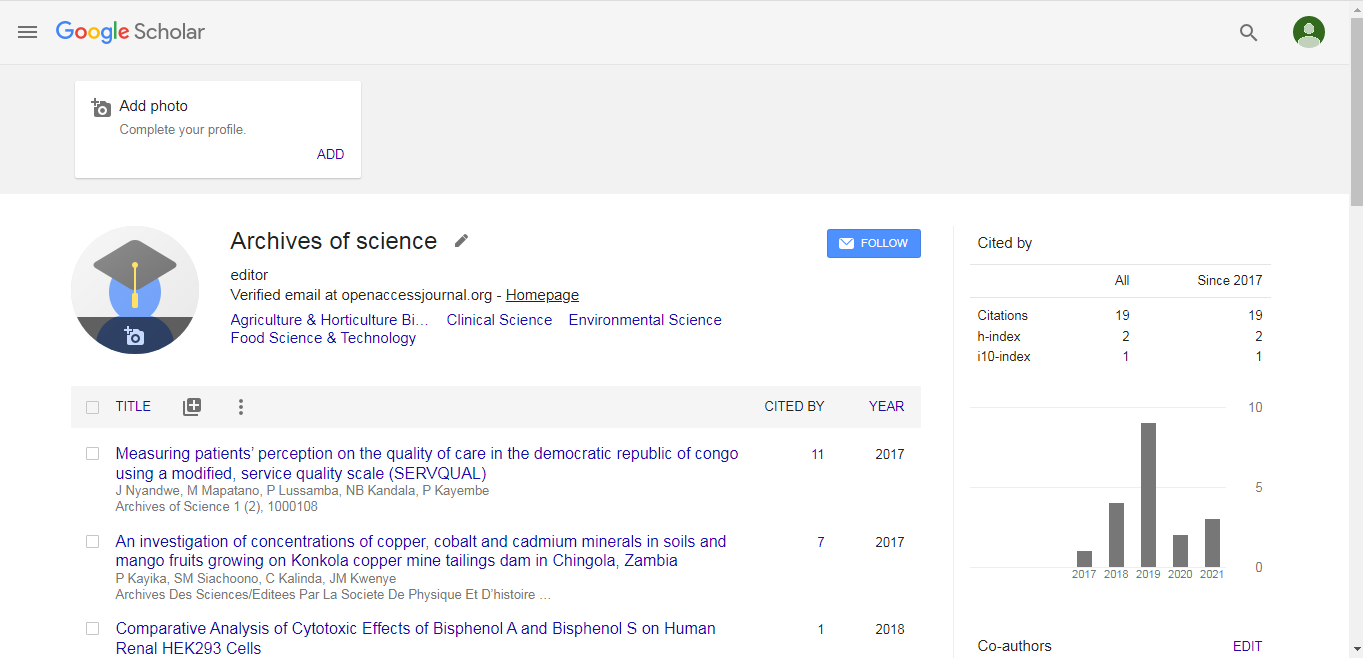Biomaterials 2019: Biodegradable microparticles with hierarchical topographical features influence mesenchymal stem cell behaviour - Chara Simitzi - University College London
*Corresponding Author:
Copyright: © 2020 . This is an open-access article distributed under the terms of the Creative Commons Attribution License, which permits unrestricted use, distribution, and reproduction in any medium, provided the original author and source are credited.
Abstract
Statement of the Problem: Mesenchymal stem cells (MSCs) are getting increasingly critical because of the large spectrum of trophic and immunomodulatory factors they secrete. The MSC secretome plays a position in angiogenesis and revascularization, immune modulation and tissue restore; however, there's a lack of strategies suitable for controlling this effect. Evidence exists to show cellular substrates have an impact on MSC behaviour. Therefore, manipulating the cellular substrate may want to provide stepped forward techniques for controlling the secretome for brand spanking new treatment plans but there may be presently a loss of cell substrates suitable for implantation.
Introduction: Stem cells, whether or not derived from embryos, fetuses, or adults, seem poised to dominate the next frontier of human regenerative medicinal drug and cellular therapy. Over the last 15 years, primary advances have been made in the isolation, way of life, and the induction of differentiation of stem cells from various sources. Stem cells have now been identified in each principal organ and tissue of the human frame. Concomitant with those discoveries are severe efforts to understand the molecular mechanisms underlying the choice of stem cells to enter mitotic dormancy, undergo self-renewal, or differentiate terminally. An information of those molecular mechanisms could help realize the awesome healing capability of stem cells. To this cease, modern technologies had been developed to interrogate genome-extensive gene expression in stem cells in order to set up the cause–effect relationship among the biologic states of stem cells and the molecular signatures that they show up. Recent research uncovered novel mechanisms by way of which stem cellular fate is regulated, implicating the participation of stem cellular-specific microRNAs and destiny reprogramming factors which can act cell autonomously. In addition to the discovery of new genes, the capabilities of definitive stem mobile markers together with Nanog, Oct4, and Sox2 are rapidly being elucidated. Continued discoveries inside the mobile and molecular biology of stem cells will facilitate their utility, the maximum exciting of which could be in regenerative remedy and mobile remedy.
The persistent scarcity of donor organs and tissues for transplantation has furnished the impetus for intense research within the discipline of tissue engineering (TE). Unlike pharmacology and physiotherapies that are especially palliative, TE and mobile therapy are looking for to enhance, update, or reconstruct damaged or diseased tissues. The introduction of diverse allowing technology coupled with paradigm shifts in biomaterial designs, guarantees to trade the fundamental landscape of TE. In latest years, biomaterials layout has advanced from the classical, first-era cloth-biased method that desired mechanical electricity, sturdiness, bio inertness, or biocompatibility to 0.33-generation, bifunctional materials that are seeking to contain instructive indicators into scaffolds to modulate cell features inclusive of proliferation, differentiation, and morphogenesis. To impart bioactivity to these biomaterials, their surfaces may be decorated with signaling molecules along with glycosaminoglycans, proteoglycans, and glycoproteins generally associated with the extracellular matrix (ECM) on cell surfaces, or they may be loaded with soluble bioactive molecules including chemokines, cytokines, boom factors, or hormones which can be released and act in a paracrine manner. Advances in conjugation chemistries have now widened the alternatives for modifying herbal biopolymers or synthetic biomaterials. The improvement of clever biomaterials that may reply to particular stimuli consisting of temperature, pH, electric alerts, light, and metabolites which include glucose7 and adenosine triphosphate may be employed to control residences inclusive of drug release, mobile adhesiveness, section conduct, and mechanical parameters inclusive of permeability, volume, and electric conductivity.
Methodology & Theoretical Orientation: The impact of implantable substrates which includes biodegradable microparticles with hierarchical topographical features turned into investigated on MSC behaviour and secretome. Poly(DLlactide-co-glycolide) microparticles were fabricated thru the thermally-induced section separation method (TIPS). Three exclusive polymer compositions of lactide/glycolide had been studied. Microparticles had been characterized in phrases of surface topography and porosity. Human adipose-derived MSCs (ADMSCs) had been connected to the surface of the microparticles and cultured for sixteen days in xeno-unfastened medium. Cell increase at the microparticles turned into evaluated at specific time-points and as compared with cells cultured on tissue culture plastic. The angiogenic hobby of the ADMSC secretome become evaluated by using ELISA and in vitro angiogenesis assays.
Findings: Three distinctive kinds of TIPS microparticles with exceptional morphological and physicochemical characteristics had been investigated. ADMSCs adhered and proliferated on all kinds of the microparticles. Vascular endothelial boom factor (VEGF) secretion became improved from cells cultured on the microparticles compared with cells cultured on tissue tradition plastic. MSCs connected to microparticles remained feasible after 16 days, had been capable of migrating from the microparticles, and retained their lineage plasticity.
Conclusion & Significance: Our consequences display that attaching MSCs to biodegradable TIPS microparticles can influence their growth and secretion of pro-angiogenic growth issue. This finding can also provide a new technique for regenerative medicinal drug

 Spanish
Spanish  Chinese
Chinese  Russian
Russian  German
German  French
French  Japanese
Japanese  Portuguese
Portuguese  Hindi
Hindi 